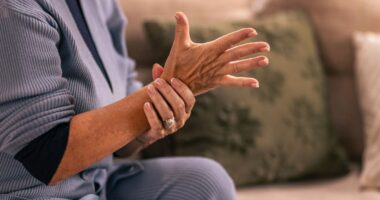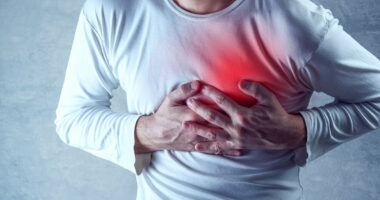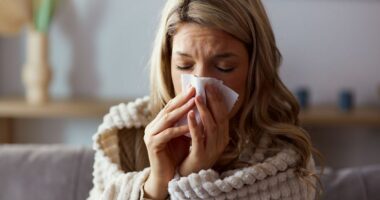Share this @internewscast.com
Although many are familiar with breast cancer symptoms that appear directly in the breast, such as lumps or swelling, the disease can also affect other parts of the body. In some cases, it may cause lymph nodes throughout the body to react similarly to how they do during a common cold.
According to Cancer Research UK, “Normally, you cannot feel the lymph nodes in your body. However, they may swell when you have an infection or a cold. A less frequent reason for swollen lymph nodes in the armpit is breast cancer spreading to that area.”
Lymph nodes, also referred to as lymph glands, are small, bean-shaped structures scattered throughout the body, including under the arms in the armpits, in the groin at the tops of the thighs, and around the neck, abdomen, pelvis, and chest.
Usually, the lymph nodes in the neck can be felt even when they are not swollen. These nodes function as filters for lymph fluid, which carries waste products, bacteria, damaged cells, and potentially cancerous cells from the body.
The lymph nodes filter out bacteria and damaged cells, which are then attacked by white blood cells. Lymph nodes enlarge when the body is fighting an infection, such as a cold, as the number of white blood cells increases to combat the invading pathogen.
However, when cancer cells break away from a tumor, they might become trapped in a lymph node, leading to its swelling. The lymph node nearest to the affected area is typically the first to swell in such cases.
For instance, during a cold, neck lymph nodes will probably swell, while a malignant tumour in the breast may cause armpit nodes to expand.
Most other signs of breast cancer are discovered within the breast itself, such as detecting or observing a lump. Cancer Research UK emphasises: “Most breast lumps are not cancer. Lumps that aren’t cancer are called benign lumps.”
The breast may have naturally bumpy regions, cysts can frequently develop in breast tissue, creating a lumpy appearance, whilst fibroadenoma represents a cluster of fibrous glandular tissue, which occurs more often in women under 40.
The charity stressed: “It is important to always get a breast lump checked by your GP. They will arrange for you to have tests to find out whether your lump is cancer or not.”
The most frequent sign of breast cancer in men is a breast lump that is almost always painless. It might also lead to nipple discharge or cause the nipple to pull inward. A rash on or surrounding the nipple and a wound in the breast skin are also typical symptoms.
For both genders, experiencing breast pain doesn’t necessarily indicate cancer either. The specialists noted that it’s fairly common in one or both breasts and there may be no clear cause for it.
Changes to the skin on your breasts could be a sign of breast cancer or other breast conditions. These changes might include puckering, dimpling, a rash, redness, or a new sore on the breast skin that doesn’t have an apparent cause.
















